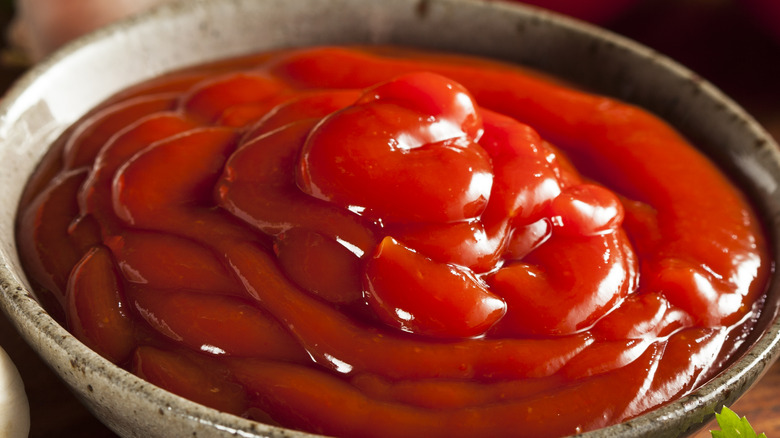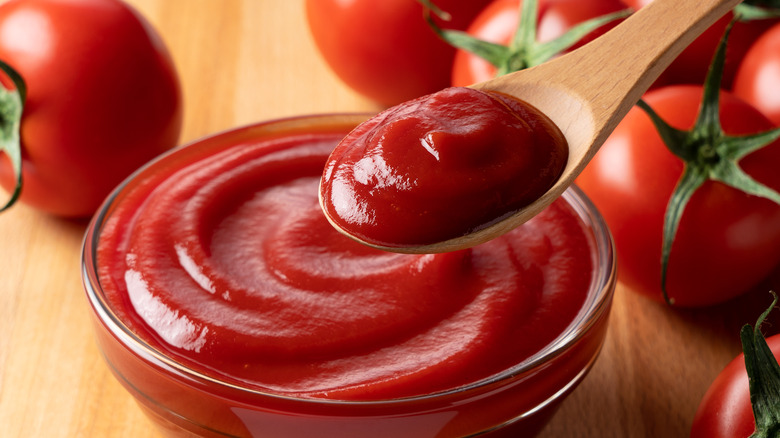Ketchup's Many Iterations Throughout History
Some of our favorite foods have not always existed in their contemporary form. Even the dishes that are the most instantly recognizable may have looked utterly unfamiliar in the not-so-distant past. In its infancy, pizza was not a cheesy creation – one of the world's earliest pizzas was vegan, a simple flatbread topped with tomato sauce. An early donut predecessor in ancient Europe was little more than a fried dough ball drizzled with honey. According to Smithsonian Magazine, apple pie, which is often considered one of the foremost culinary representations of class Americana, originated in Europe.
One of the most iconic pairings in all of the American cuisine is french fries and ketchup. BBC Travel tells us that the geographically-mislabeled french fry was invented when the citizens of a Belgian town, Namur, found themselves, by virtue of a winter freeze, unable to access their usual supply of fish from the River Meuse. When the townsfolk subbed in potatoes at their next fish fries, the french fry was born. Ketchup has a similarly interesting history, which involves a considerable number of recipe changes.
Is ketchup a Chinese condiment?
Ketchup is an incredibly popular condiment in the U.S. In 2020 alone, over 300 million Americans ate ketchup. via Statista. However, the earliest historical mentions of ketchup can be dated back to before the U.S. was even founded.
According to History, ketchup has been around for a couple of thousand years, and it first appeared in ancient China. Ancient 'keo-chup', as the sauce's name is pronounced in the Southern Min dialect, was a pungent fermented sauce made of fish guts, meat offal, and soybeans. The fermented paste proved the perfect shelf-stable seasoning to bring along on lengthy boat trips, per History.
Smithsonian Magazine explains that ketchup then began to migrate, eventually settling in parts of southern Asia. In the 1700s, British colonizers exploring the area developed a taste for the fermented fish paste and brought the ketchup predecessor back home with them. From there, the condiment quickly began to transform.
The modern history of ketchup
After the condiment arrived in England, it quickly became a staple sauce. The first ever European recipe for ketchup was published in 1758's "The Compleat Housewife," per NPR. Similar to its Chinese predecessor, English Catsup had a base of anchovy. It also featured a blend of spices, which England had acquired through centuries of colonialism.
Decades later, America finally entered the ketchup game, NPR goes on to explain. A persistent myth kept Europeans from eating tomatoes for hundreds of years — the crimson fruit was once called the 'poison apple'. As such, it was until ketchup came to the U.S. that tomatoes were introduced to the recipe. A Philadelphia scientist named James Mease gave us the first tomato ketchup recipe in 1812, though he had known that the fruit could be used to make spectacular sauce since the early 1800s, per NPR. Today, ketchup recipes call for cooks to blend tomato with sugar and spice, which all come together to make a condiment that is rich in both history and complex flavors.


